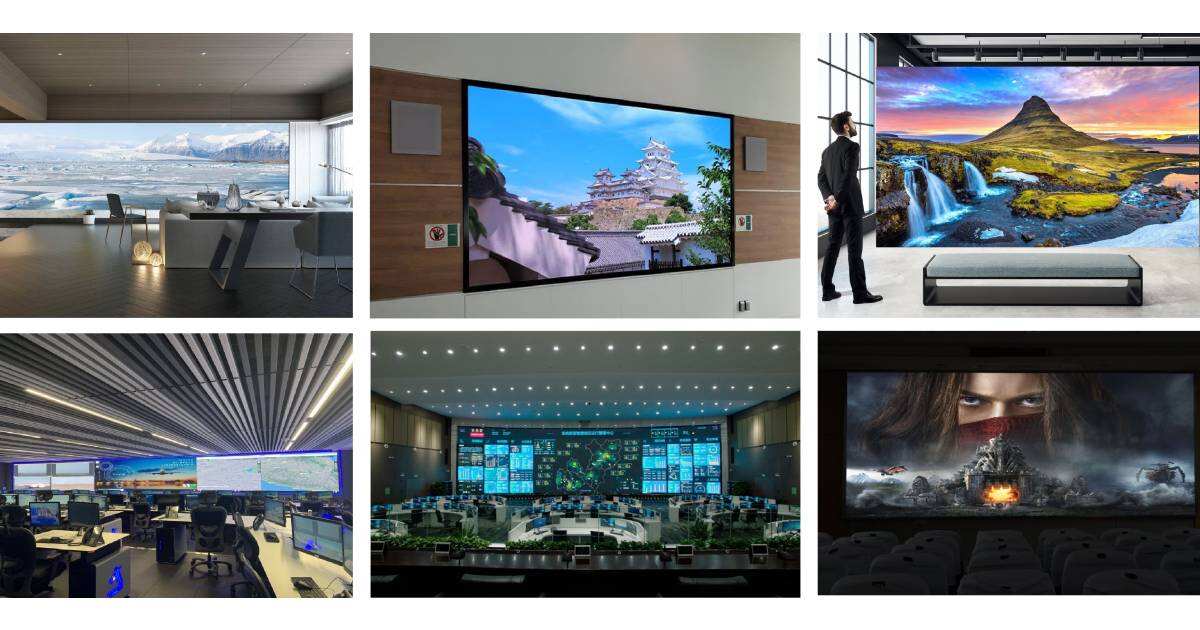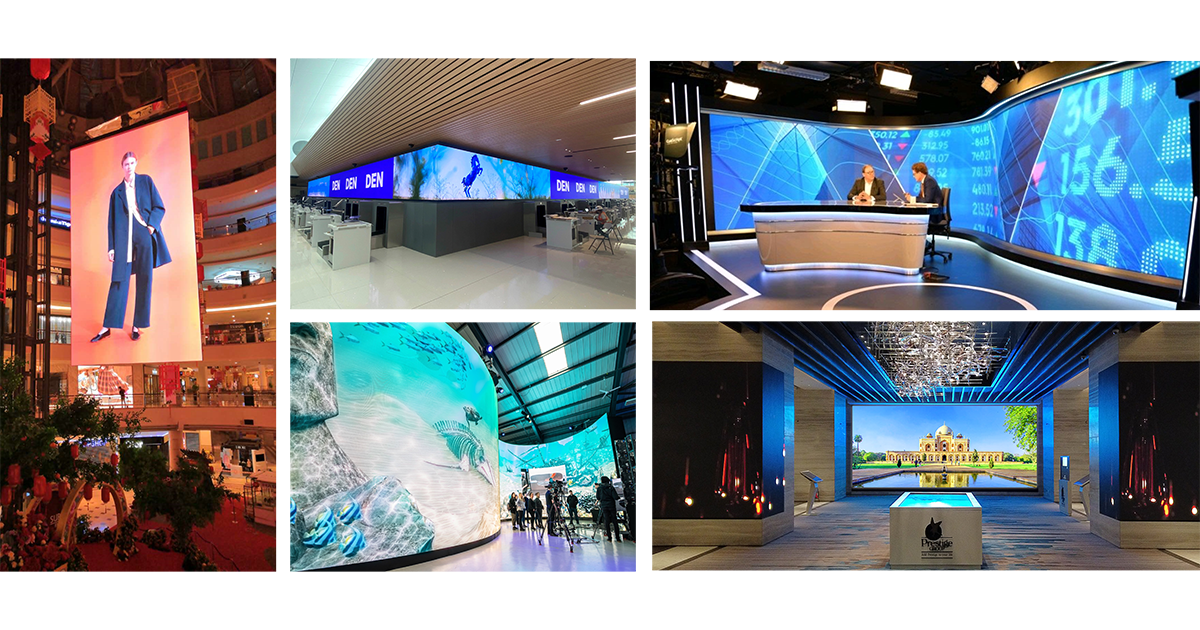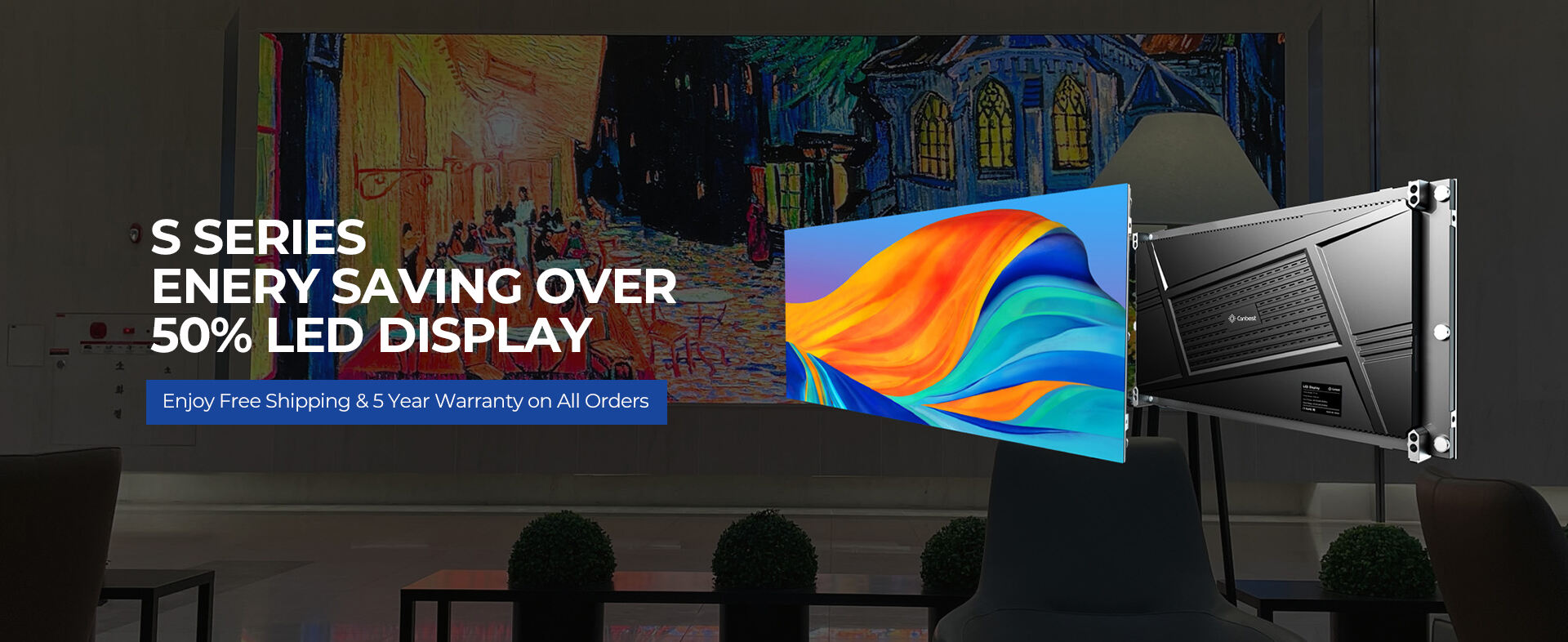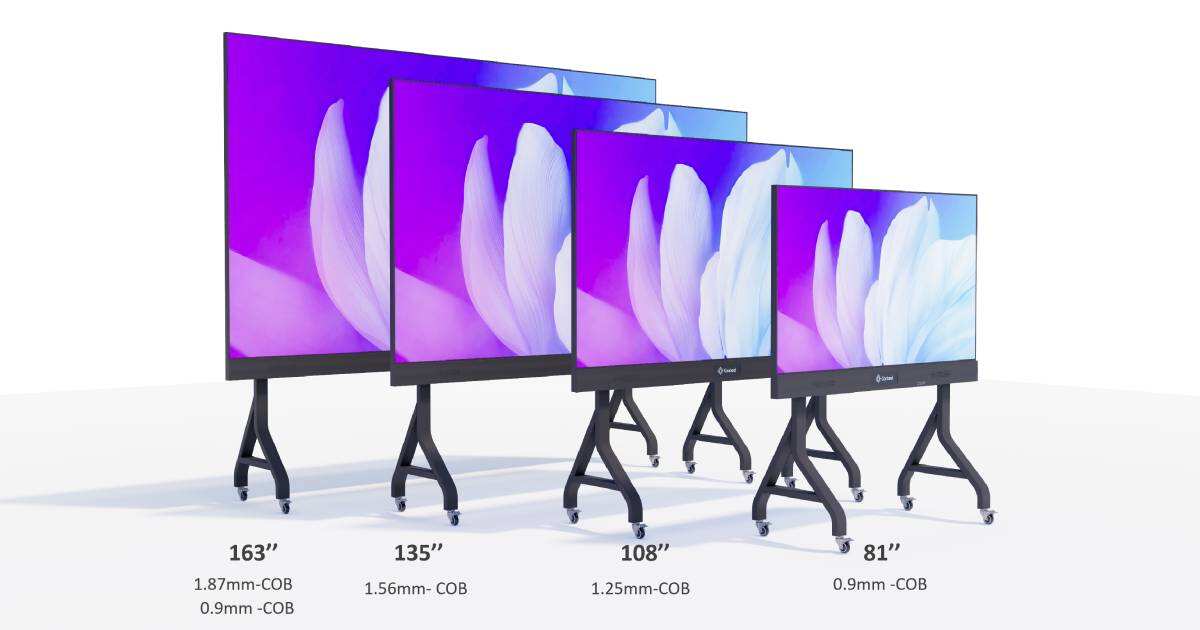The Future of Display- Exploring the Benefits of Indoor LED Screens
The Future of Display Technology: Exploring the Benefits of Indoor LED Screens
Step into the future with indoor LED screens. These cutting-edge display technology marvels are revolutionizing the way we experience visual content indoors. With their vibrant colors, sharp details, and impressive brightness, indoor LED screens are becoming the go-to choice for businesses, organizations, and event venues alike.
Indoor LED screens offer a myriad of benefits that will captivate your audience and enhance your brand. Their high resolution and contrast ratios ensure crystal-clear images and videos that leave a lasting impact on viewers. Moreover, their flexibility in size and shape allows for creative and immersive installations in any indoor environment.
From corporate boardrooms to retail stores, museums to entertainment venues, indoor LED screens are transforming spaces, turning ordinary walls into captivating displays. Whether you're looking to engage customers, inform employees, or create an unforgettable experience, indoor LED screens are the future of display technology.
Embrace the power of indoor LED screens and unlock a world of possibilities for your brand. Stay ahead of the competition, impress your audience, and make a lasting impression with these mesmerizing displays. Elevate your business to new heights with indoor LED screens.
Advantages of Indoor LED Screens over Traditional Displays
Indoor LED screens offer numerous advantages over traditional displays, making them the preferred choice for businesses across various industries. Firstly, the high resolution of LED screens ensures exceptional image quality. With millions of pixels packed into a compact space, LED screens provide sharp and vibrant visuals that can engage and captivate any audience.
Furthermore, LED screens have superior contrast ratios compared to traditional displays. This means that images displayed on LED screens have deep blacks and bright whites, resulting in a more immersive and dynamic viewing experience. Whether it's a movie, a presentation, or an advertisement, LED screens deliver visuals that truly pop.
Another advantage of LED screens is their impressive brightness levels. These screens can produce significantly higher levels of brightness compared to traditional displays, making them suitable for various lighting conditions. This feature is especially beneficial in spaces where natural light is abundant or in environments where the lighting conditions can change frequently.
Moreover, LED screens are highly versatile in terms of size and shape. Whether you need a large display for a conference room or a small screen for a retail store, LED screens can be customized to fit any space. Their flexibility allows for creative installations that can transform ordinary walls into captivating visual experiences.
Different Types of Indoor LED Screens
When it comes to indoor LED screens, there are different types to choose from, each with its own unique features and benefits. The most common types include direct-view LED screens, LED video walls, transparent LED screens, and flexible LED screens.
Direct-view LED screens are standalone displays that can be mounted on walls or placed on stands. These screens are ideal for applications where a single screen is sufficient, such as in boardrooms, retail stores, or reception areas. Direct-view LED screens offer excellent image quality and brightness, making them suitable for both short and long-distance viewing.
LED video walls, on the other hand, consist of multiple LED panels seamlessly tiled together to create a larger display. These video walls are commonly used in large venues such as stadiums, shopping malls, and concert halls. LED video walls offer a more immersive and impactful viewing experience, as the larger screen size allows for greater visual impact.

Transparent LED screens are a relatively newer innovation in the LED display industry. These screens are designed to allow light to pass through, making them ideal for applications where maintaining visibility is crucial. Transparent LED screens are often used in retail stores, museums, and showrooms to create eye-catching displays while still allowing customers to see through the screen.
Lastly, flexible LED screens are designed to be bendable and can be shaped to fit curved or irregular surfaces. These screens are commonly used in creative installations, architectural designs, and stage backdrops. Flexible LED screens offer endless possibilities for creating unique and visually stunning displays.
Applications of Indoor LED Screens in Various Industries
Indoor LED screens find applications in a wide range of industries, revolutionizing the way businesses engage with their audiences. In the retail industry, LED screens are used to showcase product advertisements, create interactive displays, and enhance the overall shopping experience. LED screens can attract customers' attention, drive sales, and create a memorable brand experience.
In the corporate sector, LED screens are utilized in boardrooms, meeting rooms, and conference centers. These screens can display presentations, real-time data, and video conferencing feeds, enhancing communication and collaboration among team members. LED screens in corporate settings create a modern and professional environment, leaving a lasting impression on clients and partners.
In the entertainment industry, indoor LED screens are a game-changer. From concert stages to theater productions, LED screens provide a visually stunning backdrop that adds depth and immersiveness to performances. LED screens are also used in museums and exhibitions to showcase educational and interactive content, allowing visitors to engage and learn in an innovative way.
The hospitality industry also benefits from indoor LED screens. Hotels and resorts use LED screens to display information, advertisements, and entertainment in common areas, lobbies, and guest rooms. These screens enhance the guest experience, provide valuable information, and create a sense of luxury and sophistication.

Cost Considerations and ROI of Indoor LED Screens
While indoor LED screens offer numerous benefits, it's important to consider the costs associated with their installation and maintenance. LED screens can be a significant investment, and the upfront costs may deter some businesses from adopting this technology. However, it's essential to consider the long-term return on investment (ROI) that LED screens can provide.
Indoor LED screens have a longer lifespan compared to traditional displays, reducing the need for frequent replacements. This translates into cost savings over time. Additionally, LED screens are energy-efficient, consuming less power than other display technologies. This not only reduces operational costs but also contributes to a more sustainable and eco-friendly business.
Furthermore, LED screens can generate revenue through advertising opportunities. Businesses can sell ad space on their LED screens, allowing them to monetize their investment. LED screens also have the potential to attract more customers and increase sales, further contributing to the ROI.
When considering the cost of indoor LED screens, it's crucial to evaluate the overall value they bring to your business. While the initial investment may seem high, the long-term benefits and potential revenue generation make indoor LED screens a worthwhile investment.
Factors to Consider When Choosing an Indoor LED Screen
Selecting the right indoor LED screen for your business requires careful consideration of several factors. Firstly, determine the purpose of the screen and the specific requirements of your application. Consider the size, viewing distance, and intended content to ensure the screen meets your needs.
Next, evaluate the resolution and pixel pitch of the LED screen. The resolution determines the sharpness and clarity of the visuals, while the pixel pitch refers to the distance between adjacent pixels. A smaller pixel pitch results in a higher pixel density and better image quality.
Brightness is another crucial factor to consider. Depending on the environment where the LED screen will be installed, you need to ensure that the screen's brightness is sufficient to overcome any ambient light. Consider the viewing angles as well, as wider viewing angles allow for a better viewing experience from various positions.
Additionally, consider the connectivity options and compatibility of the LED screen with your existing hardware and software. This ensures a seamless integration into your current setup and minimizes any potential compatibility issues.
Lastly, don't overlook the importance of support and warranty from the LED screen manufacturer. Ensure that the manufacturer offers reliable customer support, comprehensive warranty coverage, and a proven track record in the industry.
Installation and Maintenance of Indoor LED Screens
Proper installation and maintenance are essential to ensure the optimal performance and longevity of indoor LED screens. When it comes to installation, it's crucial to hire professionals who have experience working with LED screens. They can ensure that the screens are mounted securely, connections are properly made, and any necessary calibration is performed.
Regular maintenance is necessary to keep indoor LED screens in top condition. This includes routine cleaning to remove dust and debris that can accumulate on the screen's surface. Additionally, it's important to inspect the screen for any signs of damage or malfunction and address them promptly.
LED screens may require software updates to ensure compatibility with the latest technologies and to fix any bugs or issues that may arise. It's essential to stay up to date with the manufacturer's recommendations and guidelines for software updates.
Lastly, consider implementing a comprehensive maintenance plan that includes regular inspections, cleaning schedules, and software updates. This will help prolong the lifespan of your LED screens and ensure they continue to deliver exceptional performance.
Case Studies Showcasing Successful Use of Indoor LED Screens
Several case studies demonstrate the successful use of indoor LED screens in various industries. One such example is a retail store that used LED screens to create immersive and interactive displays. The screens showcased product information, videos, and animations, capturing customers' attention and driving sales. The store reported a significant increase in customer engagement and brand awareness as a result.
In the corporate sector, a multinational company implemented LED video walls in their boardroom. The video walls allowed for seamless video conferencing, real-time data visualization, and dynamic presentations. The company reported improved collaboration among team members and a more impactful communication experience with clients and partners.
In the entertainment industry, a concert venue installed LED screens as part of their stage design. The screens provided stunning visuals that synchronized with the performances, creating a truly immersive experience for the audience. The venue saw an increase in ticket sales and positive feedback from concertgoers, solidifying their reputation as a premier entertainment destination.
These case studies highlight the versatility and effectiveness of indoor LED screens in transforming spaces and enhancing the overall experience for both businesses and their audiences.
The Future of Indoor LED Screens and Emerging Trends
The future of indoor LED screens is promising, with several emerging trends shaping the industry. One of the key trends is the development of flexible and transparent LED screens. These screens allow for even more creative installations and are opening up new possibilities for architectural designs, retail displays, and stage productions.
Another emerging trend is the integration of LED screens with other technologies such as augmented reality (AR) and virtual reality (VR). This combination creates immersive and interactive experiences that blur the line between the physical and digital worlds. Indoor LED screens will play a crucial role in delivering these experiences to audiences.
Furthermore, advancements in LED technology are leading to screens with higher resolution, improved color accuracy, and increased brightness. These developments will further enhance the visual quality and impact of indoor LED screens, making them even more compelling for businesses and organizations.
The industry is also witnessing advancements in LED screen control systems, making it easier for users to manage and control their screens. From remote monitoring and content management to real-time adjustments, these control systems streamline the operation and maintenance of LED screens.
As the demand for sustainability grows, the future of indoor LED screens will also focus on energy efficiency and eco-friendly designs. LED screens will continue to consume less power while delivering exceptional performance, contributing to a greener and more sustainable future.
Conclusion: Harnessing the Power of Indoor LED Screens for Your Business
Indoor LED screens are transforming the way we experience visual content indoors. Their vibrant colors, sharp details, and impressive brightness captivate audiences and enhance brand experiences. From retail stores to corporate boardrooms, indoor LED screens offer endless possibilities to engage, inform, and entertain.
When considering indoor LED screens for your business, weigh the advantages they offer over traditional displays, such as superior image quality, flexibility in size and shape, and immersive installations. Evaluate the different types of LED screens available and choose the one that best suits your specific requirements.
Consider the cost considerations and ROI of indoor LED screens, recognizing the long-term benefits and revenue generation potential. Pay attention to factors such as resolution, pixel pitch, brightness, viewing angles, and compatibility when selecting an LED screen. Ensure proper installation and maintenance to maximize performance and lifespan.
Learn from successful case studies and stay updated on emerging trends in the industry. The future of indoor LED screens is exciting, with advancements in technology and new applications on the horizon.
Embrace the power of indoor LED screens and unlock a world of possibilities for your business. Stand out from the competition, impress your audience, and create memorable experiences with these mesmerizing displays. The future of display technology is here, and it's time to embrace it with indoor LED screens.


















































